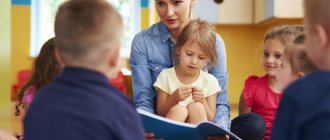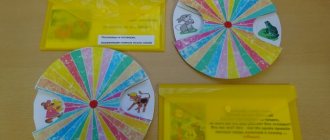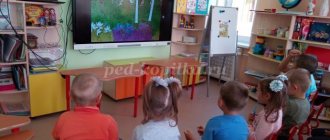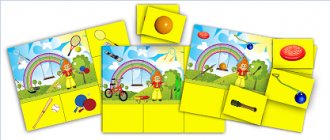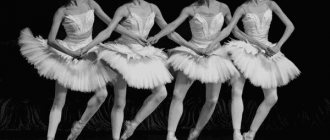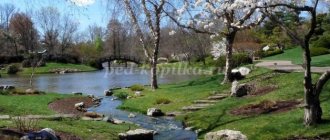An erasable world map (sometimes called an erasable world map, a washable world map, an erasable world map, an erasable world map, a world conquest map, etc.) is a large format 84x59 cm wall map of colorful Countries and continents covered with a special scratch layer that can be erased from the coin. On some types of such maps, interesting questions, wonders of the world, mysterious places and pictograms are covered with this layer. Each scratched map of the world is rolled into a colored tube and closed on both sides with metal lids.
Even before taking out the gift, the recipient is already having a good time. An attractive, brightly designed tube that protects the extraordinary world map with an erasable, scratch-resistant layer, conceals an exciting promise of adventure and invites you on a journey, so to speak.
At first glance, it may seem that there is nothing interesting in the world blur map. This is a sheet of thick laminated paper in large format (A1), on which oceans, seas and continents are highlighted using contrasting colors. However, do not rush to be disappointed, the most interesting things are yet to come.
The scratch map of the world works on the principle of modern lottery tickets; the top layer is easily removed using an ordinary coin. More detailed markup is hidden below:
- all countries of the world
- administrative boundaries of states
- capitals and large cities with a population of over a million
- seas, oceans, continents
- pictograms and secret places
- Quiz questions and interesting facts
- wonders of the world
- many other interesting features
Goal: To introduce children to China, its people and nature.
Evolutionary tasks:
Learning Objectives:
Training assignments:
|
System of gaming techniques of the technology “Travel along the map to the city of sounds”
System of gaming techniques for the “Travel on the map in the city of sounds” technique
One of the most important problems in ensuring the quality of modern preschool education is the use of active forms of organizing the educational process: experimentation, research, a system of problematic issues, project activities, etc., but in the practice of speech therapists, methods and techniques remain traditional, mainly illustrative and explanatory. The use of the “Map Travel” technology allows the teacher to solve not only specific problems, but also provides the opportunity for a smooth transition from traditional classes to forms of joint activities; “natural play” provides an opportunity to effectively work with children, regardless of their characteristics and level of development. In my practice, I use a system of educational games and exercises that I developed, “Travel on a map in the city of sounds,” based on a type of research called traveling on a map (proposed by N.A. Korotkova). When organizing direct educational activities, the teacher must take into account general developmental tasks, formulate developmental content in a form that attracts the child, stimulates his development and allows him to take an active research position. This type of research can be used to create favorable conditions for performing developmental tasks to master the basics of literacy. Initially, in accordance with the selected sequence of training sounds, a map was created consisting of 4 parts (for training periods). It depicts sound houses in which the children of the residents live - “sounds”. Houses have different shapes (hard consonants, soft sounds) and roof colors (consonants, vowels). Some of them have bells on the walls (houses for sound consonants). To indicate whistling and hissing, “signs” were introduced - symbols (joint of lips, crown) - this is a card that is used by speech therapists and teachers (always found in the group). A black and white version of the map has been created for children, allowing them to generalize, clarify their knowledge and independently create a map of the city of sounds throughout the entire course of study. Children are invited to “populate” together and then, regardless of the sound they are learning, paint the house. During this work, tasks such as orientation on a sheet of paper and the development of graphomotor skills are solved in parallel. The card is created by the child throughout the course of study, for two years. The starting point on the map is a kindergarten, the ending point is a school. The student knows that knowledge of letters and sounds will help in learning at school in the future. This serves as a motivating moment for the preschooler. In the context of using the technique of traveling on a map, it is possible to implement any content directly in educational activities, which are traditionally included in the literacy course for preschoolers. The use of this type of research in the practice of a speech therapist does not pursue the goal of giving children memorized formulations of the characteristics of sounds. The main thing here is to create integral images in children's imagination through the use of bright “signs” - symbols (shapes and colors of house roofs). This makes it possible to structure educational activities in such a way as to evoke cognitive initiative in children and support their research activities. Having adopted the position of an interested and curious partner, the teacher should approximately adhere to the following sequence of research stages: 1. Updating the cultural and semantic context, encouraging children to ask questions related to the topic being studied (creating a problem situation). 2. Discussion of ideas, children putting forward hypotheses on issues that have arisen (for example, the direction of movement is determined, a path is outlined); 3. Experimental control or symbolic fixation of the object of connections (use of games). Game “Tell about the sound” Children are invited to independently develop a reaction plan using symbolic cards. In the process of working with children, these symbols undergo changes and additions appear. So in the first version there was no digital designation on the cards. The need for its appearance was dictated by the fact that some students could not remember the order of the cards (answer plan). As a result, two options for a set of cards are used in the work: with and without digital designation (depending on the level of training). The appearance of the “crown” symbol made it possible to memorize whistling and hissing; The exclamation mark is a reminder that the sound is always soft (hard). Game “Houses for Sounds” Children are invited to build a house for sound or sounds. The previously studied sound characteristic has a visual expression. With the task set: to find differences in the characteristics of sounds, the child can easily cope with a previously “built” house. Game "Magic Sounds" Residents of the city of sounds wear costumes in their favorite colors. You can ask the children to put on the sounds (color the costume) or, after choosing a villager, write their name (write the letter). 4. Offer children disciplinary material that ensures continued exploration in free activity in groups or at home with parents: creating a collective alphabet (to improve letter memorization) and a letter theater (theater games). Using the technology of working with a map makes it possible to increase the chances of developing integrative qualities in children, such as independence, activity, initiative, curiosity, which contribute to the formation of ways to organize experience with a traditional orientation to Argument; the teacher is more focused on transmitting specific information.
What else to read: Methodological development of the lesson “Modeling flowers from plasticine” for children 7-8 years old
We recommend watching:
Development of communication skills of children 5-7 years old in theatrical activities. Spiritual and moral education of preschool children. Introducing preschoolers aged 5-7 years to Russian folk culture. Educational materials for preschoolers. Memorizing Serov's poem "Bukanevo"
Similar articles:
Methodology for conducting physical education in kindergarten
Morning exercises in the preparatory group in a playful way
Dramatic games for children 5-6 years old
Kindergarten with dances for children 5-7 years old. Scenario
Outdoor games as a means of harmonious development of a child
Preview:
Educator: - Each city, like a person, has its own age. You also have age. How old are you? (points to the child, he answers), What about you? (asks several children). And I have age. Who knows how old our city is (Children's answers - 124.) Okay. Our city is called Novosibirsk, and what its inhabitants are called (Novosibirtsy.) So, you too are Novosibirsk people.
Equipment: photographs of city views, coat of arms, musical accompaniment (Paul Mauriat “In the Animal World”, Leonid Utesov “Planes First”, Pyotr Tchaikovsky “The Nutcracker”, Muslim Magomayev “Victory Day”, Yeralash “Music of Happiness”, church bells “Wedding bells”, M. Malinin “Children’s anthem of Novosibirsk”).
Educator: - Well done. Take your seats. First, the bus travels along the street where our kindergarten is located. Who knows what it's called?
Educator Every city, like a person, has its own age.
Children
: — Green color means health, natural resources of the Siberian land, white represents purity of thoughts, reminds of the endless Siberian snows. The blue color symbolizes the great Ob River, and the black and silver thin belt symbolizes the Trans-Siberian Railway with a railway bridge, a structure that became the basis for the emergence and construction of Novosibirsk.
— to form in children a sense of cohesion, unity, and a positive emotional mood within the team;
Means of education and training:
visual (illustrations, use of maps, cards); multimedia (showing a presentation accompanied by the sounds of a train, video “From the Train Window”); literary (reading riddles, a poem about a panda); musical (Chinese melody).
| Sequencing | Methods | Contents of teacher activities | Entertainment for children | Planned result |
| Selecting a Destination | Conversation, stimulation with fun content, demonstration | Guys, yesterday I helped grandma clean out the closet and see what interesting hat she found. (Showing an Asian hat) Does anyone know what this is? My grandmother told me that this hat is worn in China, where people work in the rice fields. Who knows where China is? Let's look at the globe. How far is this country and would you like to visit it? Are we going on a trip? Guys, what city is the capital of our Motherland? And in China it is Beijing. Maybe we should go there? | Children express hypotheses and participate in conversation. Express your opinion about upcoming events. | Children's readiness for joint activities. |
| Select a car | Situation of free choice | Look at the globe, what can we bring to Beijing? Are there seas or large rivers that we can travel along? Or maybe fly or take a bus? I think traveling by train is also possible, and it will be quite affordable. | Children offer their ideas on choosing transport. | Show independence in your choice and initiative. |
| Determining the route, plotting it on a map (globe) | Exercise, explanation | We trace our route on the map. Where are we? In what city? Find it on the map. Wherever you go, it's all about Beijing. Also find it on the map. We outline our path with a red marker. | Departure and arrival points can be found and marked on the map. | Show cognitive processes: thinking, attention. |
| Make assumptions about what and who you might encounter along the way; What do children know about the destination? | Conversation. | Before you go on a trip, think about what we can see on the street, who we can meet? Do you know anything about China? Compared to our country, do you think it is warmer or colder? | Children organize a “train” with the help of a teacher. They make hypotheses. | Show cognitive processes: thinking, imagination, memory. |
| Travel. Fill the map area (globe) with intersecting contour lines, crop marks | Game situation, illustration, exercise, story, artistic expression, psycho-gymnastics, exercise. | It's time for us to go on a journey. The train departure signal sounds and the children watch the video “From the Train Window.” We've been traveling around China for a long time and now we're finally there. We arrived at Beijing's main station. We walked up the stairs to the waiting room and out onto the city street. (Shows images on a slide) But look who's meeting us! This is Lee. And pay attention to her headdress, who remembered her name? Lee invites us to go to the rice fields. What do you think they do with them? Lee wants to lead us along a mysterious path. To overcome it, you need to perform the movements correctly. (holds physical for a minute) And here we are in Yunnan province. Mostly there are mountains. Therefore, the Chinese had to invent such multi-level rice fields (slideshow). Everything is done so that moisture is retained and the fertile layer of soil is not eroded. Guys, Lee invites us to guess the riddle: this bear is black and white. He is trusting and kind. However, it is very rare to see Mishka with a nickname... Does anyone know the answer? Lee suggests we go to the zoo and find out what kind of bear it is. And here we are at the Beijing Zoo (animal show). It was discovered a long time ago, more than a thousand years ago. And during its existence, a huge number of animals and birds were collected here. The most important areas of the zoo: The Giant Panda House, Monkey Mountain, Medvedev Mountain, Lion and Tiger Hill and others. In the two-story amphibian and reptile enclosure, visitors can see the inhabitants of the Yangtze River: alligators, turtles, snakes and pythons. The panda has become the national symbol of China. Let's take a look. It is also called bamboo bear, why do you think? Bamboo is a very tall and durable grass. There are very few pandas left on the planet; they are listed in the Red Book. Do you remember what book this is? Therefore, reserves are created for pandas. Who did we meet at the zoo? Let's draw these animals. (Game “Come on, show” a panda, a lion, a monkey, etc.) Well done, now let’s get on the train and return to Russia! | "They're on the train." They watch the video, look at the illustrations. They get up from their chairs and approach the easel. Exercises: Clap your hands under the raised knee; separate file; hands to the side. Look at the illustrations. | They have an understanding of the nature and animals of China. They can solve puzzles. They know the peculiarities of Chinese work. |
| Summing up, testing hypotheses, what new things have been learned | Conversation, generalization. | Guys, what country have we visited now? What you see? Did you learn anything new? Is China similar to our country? (Children, remembering what they have learned, use the map as a hint) | Express your opinion about the activities carried out. Join the conversation. | I can express my opinion. They say complete answers. |
| Openness-orientation towards the autonomous activities of children under regime conditions and in the family | Conversation. | Did you enjoy our trip? Don't forget to tell your parents where we were today. Now, if you wish, you can draw a panda. | Listen to the teacher. | Cognitive processes: attention, memory. |
What else to read: Developmental manual “Rings of Lull” educational and methodological manual (senior group) on the topic
MAGAZINE Preschooler.RF
Entertainment for Russia Day for younger preschoolers “Travel with a kolobok along a fairy-tale map of Russia”1 slide. – “Russia”
Host: I have a birthday, and you have a birthday. There is a birthday for the country in which we were all born.
June 12 is Russia Day, the holiday of a great and strong country. The holiday of the country in which we live, the Country that we call our Motherland.
1 child avg. gr. If we have to fly for a long, long, long time on a plane, 2nd child Wed. gr. If we look at Russia for a long, long, long time,
3 child Wed. gr. Then we will see forests, and cities, Ocean spaces, Ribbons of rivers, lakes, mountains...
4 child Wed. gr. We will see the endless distance, the Tundra, where spring rings, 5 child Wed. gr. And then we will understand what a big, vast country our Motherland is.
Slide 2 – the first verse of the song “My Russia has long braids...” (pictures change by clicking in accordance with the words of the song text)
Leading. Yes, our Motherland is both beautiful and rich, guys!
There are many secrets and miracles in it, There are many fabulous places in Russia.
Slide 3 – Kolobok.
Host: Who's rolling there in the distance Without paths, without roads? On a hill, on a hump, Through a field and a forest?
(When clicked, the kolobok song sounds. The kolobok appears.)
Kolobok: Hello, my friends! You all recognized me. I am perky and cheerful, I have a ruddy side.
A kind, glorious little bun has rolled to you from a fairy tale. I love to travel and I invite you with me.
Slide 4 – fabulous map of Russia. (First, with a click, fairy-tale characters appear, and then a fairy-tale map of Russia appears.)
Kolobok. There are many different miracles in Russia, There are many fabulous places in Russia. Let's go, go ahead! A fairy tale awaits you to meet us.
Slide 5 – Kukoboy – the birthplace of Baba Yaga. Presenter: In the land of Yaroslavl there is a village called Kukoboi. There's a hut in the forest
Old ladies alone. That grandmother has a bone leg, And everyone calls her Baba -... (Yaga)
(By clicking, Baba Yaga’s song “On Unknown Paths” , Baba Yaga appears, she dances with the children)
Baba Yaga: I'm not a scary old lady, they called me Yaga. They say that I'm bad, with a bone like a leg.
Don’t believe me that I fly on a broom, it’s not true! I’m not a bad granny, I’m not scary anymore.
I have prepared my magical riddles for you guys. There is a lot of goodness in my hut. This is what the riddles will be about, friends.
Slide 6 – the riddles of Baba Yaga. (The answers appear by clicking)
1. This miracle is just right I tried it on myself more than once: If you put them on, - Through the mountains, through the fords,
They will carry you through. (Boots - Fast Walkers)
2. It shines and shines, It doesn’t flatter anyone, But it will tell anyone the truth - It will show them everything as it is. (Mirror)
3. I am fluffy, soft, round. There is also a tail, but I’m not a cat, I often jump elastically, I’ll swing under the chest of drawers. (Ball of thread)
4. This is not a slacker at all - This is a miracle - a needlewoman! Ask her quickly - she will feed all the guests in an instant:
On the table and early in the morning It will unfold... (Self-assembly)
5. He flies out of the clouds and flies over the trees! Flying across the sky without worries, Not a helicopter, not a plane:
The pilot does not control it, but it always flies forward (Carpet - Airplane)
6. What kind of miracle? What a miracle? - How beautiful it is! This Saucer is not simple - This Saucer is Golden:
It will show you everything, as if you were in a movie (Magic Saucer with a Golden Apple)
Slide 7 – mortar and broom. And in this object I often fly, I cover my tracks with another object. (Mortar and broom) Well, so that you don’t get bored,
I suggest you play, fly on a broom.
(The “Flying on the Broom” ; kids “fly” on a broom.)
Wow, what fun we had flying! Yes, it's time to say goodbye to you. It's time for me to return. Goodbye friends!
(Sits on a broom and flies away)
7th slide (click) – a bun appears. Kolobok. The journey continues. We're moving on. Slide 8 – Ermakovo village, Ryaba chicken museum.
Host: And in the village of Ermakovo there is a painted house. And the chicken Ryaba lives in it with his large family.
Slide 9 - hen and chickens Presenter: Ryabushka Hen, a kind fat girl, walks around the yard, calls the children: Co-co-co, guys, where are you, chickens,
Yellow lumps, daughters and sons? Hurry to mom: we will eat seeds and crumbs with you, get out the spoons.
(Click on the slide, the song “Chick, chick, my chickens” . Ryaba the chicken appears; she dances with the children.)
Ryaba Chicken: I am a Ryaba hen - I live in a village. I have long had a reputation for being smart and beautiful.
Everyone here knows me, loves me, respects me. They built a museum for me. There are a lot of different things there.
There is the whole chicken family: Cockerel, chickens, me. There is a grandmother and a grandfather here, and there is a mouse, our neighbor.
The mouse, such a cheat, cleverly broke the egg with its tail. You guys, help me, quickly collect the egg from the fragments.
(The game “Assemble an egg from fragments” is played. Children of the 2nd junior and middle groups play. From the 2nd junior group there are 4 people (their testicle is cut into 4 parts), from the middle group 6 people (their testicle is cut into 6 parts)
Chicken Ryaba: Thank you, my friends! Now kids, hurry up and come here. Let's play now
And catch up with the testicles. Kinder Surprise around the hall .) 1-2-3 - catch the egg! (Children catch up with the testicles and bring them to the chicken in a basket)
Chicken Ryaba: You have a lot of fun, But the time has come to say goodbye. Goodbye, kids! I'm waiting for you to visit me.
(The chicken leaves)
10 slide – bun. Kolobok: I’ll introduce you to another hero. The city bears his name.
And I think for good reason.
Slide 11 – the city of Myshkin and the Museum of the Little Mouse.
Leading. Along the banks of the big river there are little houses everywhere. A famous city stands here - the ancient Russian city of Myshkin.
Here is the mouse country Myshkin loves the children of the mouse in their holes, they don’t live, they built a palace here.
Here the mouse king and queen welcome guests to the palace. And the adorable little mice lead the guests through the wards
And they will tell you what and where.
(A toy mouse appears on the screen)
Mouse: I have a small stature and a long tail. Gray coat, sharp teeth. I live in a hole
I love gnawing on crusts. I love rustling behind the wall, squeaking in a thin voice. And my fast legs
They will always run away from a cat. Hello guys! Hello little mice! I came to visit you
And she brought the game. Get into a circle quickly, and play more fun!
(The game “The mice came out one day!” . Children of the 1st junior group play first, and then the 2nd junior and middle groups)
Mouse: And I have one more gift for you guys.
I decided to give you a fairy tale
About the mouse, that is, about myself.
(Children watch the cartoon “About the Mouse Who Wanted to Become Strong” )
Slide 12 - the bun says goodbye to the guys.
Kolobok: Our journey is over, guys. The time has come for me to say goodbye to you. Russia is great and rich in fairy tales, I will meet you more than once, friends!
I will introduce you to new heroes. I'll tell you about the place where they live, We will see a lot, we will learn a lot, But for now, goodbye, fairy tales await me. Goodbye, guys! See you again!
| Next > |
